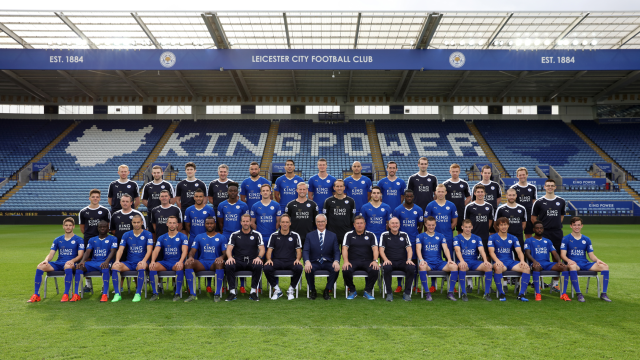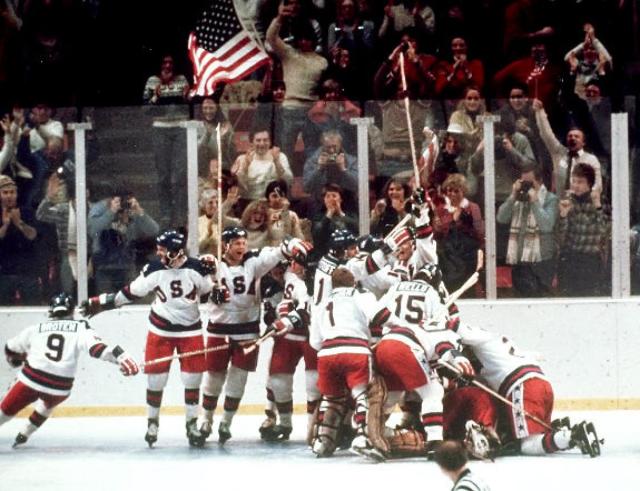
It may not have gotten much attention here in the United States, but I certainly was keeping an eye on it over the weekend. For those that don’t know anything about football – soccer to the U. S. fan – the English Premier League’s championship was decided over the weekend. In a shocking occurrence, Leicester City – who was on the verge of relegation (re: being sent down to a lower division of professional football in England because they finished in the bottom three of the Premier League) with seven games to go last season – completed one of the most remarkable turnarounds in sports history in winning the Premiership this season.
How big of a turnaround was this? Here’s some stats to give you an idea. The British bookmaker William Hill had Leicester City as a 5000 to 1 shot to win the Premiership at the beginning of the season last fall (and was still around 100-1 in January when Leicester City was leading the league) and many felt that relegation was more likely for the team in 2016 than anything else. They had to make a late run last year to finish in 14th place and started this year with a new manager, Claudio Ranieri, who wasn’t exactly loved by the Foxes fandom. Additionally, in the 30-plus years of the Premier League (and in going back to 1888 with English football), Leicester City had NEVER won the top-tier football league championship; in fact, in the Premier League, no team not named Arsenal, Chelsea, Manchester City or Manchester United had won the title since 1995 (Blackburn Rovers).
The stunning turnaround by the Foxes has brought up the question by many if it is the greatest sporting achievement of all-time. While the achievements of Leicester City are up there on the ladder, there’s a whole world of instances like this to choose from.
There are plenty of individual acts that you can put up as the greatest sports achievement ever. If you look at the sport of baseball, we can go back to the legendary Cy Young’s record for most wins by a pitcher of 511. The next closest pitcher to that mark is another member of the Baseball Hall of Fame, Walter Johnson, who is nearly 100 wins behind Young with his 417 victories. To get to someone from the “modern era” (let’s be kind and call that 1950), you have to go down to Warren Spahn in sixth place with his 363 wins; even Greg Maddux (355) and Roger Clemens (354), legends from my lifetime, aren’t even close (the active pitcher with the most wins? I didn’t believe it myself…Bartolo Colon with 220!).
Then there are the hitting achievements. Nobody thought that Ty Cobb’s 4191 all-time hit record would ever be touched, but then Pete Rose came along and stroked 4256 hits (best active player? Alex Rodriguez, 3082). The home run record is a bit tainted with the Steroid Era of baseball (I personally still consider Hank Aaron’s 755 the record), but thoughts of anyone touching Barry Bonds’ 762 is a fantasy (even A-Rod – or A-Roid – can’t reach it at 692). The ONE record that might stand the test of time is Joe DiMaggio’s 56-game hitting streak; nobody’s come close to that since 1978, when Rose went for 44 games (most recently, Jimmy Rollins went for 38 between two seasons in 2005-06).

Basketball has its share of great sports achievements and, this time, there are some team acts that come into the mix. This season in the National Basketball Association, the defending champion Golden State Warriors broke the record for most wins in a season (73) that had been held by Michael Jordan’s Chicago Bulls. The Boston Celtics’ string of eight consecutive NBA championships will never be equaled (neither will their nine titles in twelve years) and the dominance of John Wooden’s UCLA teams in the NCAA Men’s Collegiate Basketball Tournament (champions for seven consecutive seasons, ten in twelve years) is unmistakable.
Still, arguably the biggest achievements in basketball were done by individuals. Back in 1962, the legendary Wilt Chamberlain went off in an NBA game against the New York Knicks, scoring 100 points in a game that was played not in the (then) Philadelphia Warriors’ home in the “City of Brotherly Love” but in Hershey, PA. If that wasn’t good enough, that 1962 season Chamberlain AVERAGED 50.4 points per game and a stunning 25.7 rebounds per contest. It makes the recently retired Kobe Bryant’s 81-point game against the Toronto Raptors in 2006 dim a little in recollection.

There are potentially only two things that could approach what Leicester City did this season. Once comes from the National Football League and the other comes from the Olympics.
Back in 1969, the New York Jets were a huge underdog to the Baltimore Colts in Super Bowl III. An 18-point underdog (the second largest point spread in the history of the Super Bowl, second only to Super Bowl XXIX, where San Francisco was favored by 18.5 points over San Diego), quarterback Joe Namath not only guaranteed that his Jets were going to win the game but then went out and dominated the event, with a late touchdown by the Colts saving them from a shutout. But were the Jets even close to a 5000-1 shot to win Super Bowl III at the start of the season? Even with a similar number of teams in the NFL/AFL at that time as the Premier League has (18 for the NFL/AFL, 20 for the EPL), probably not.
The ONLY thing that might be comparable to the achievement of Leicester City is the Team USA “Miracle on Ice,” the defeat of the Soviet Union’s Red Army team in the 1980 Winter Olympics. It isn’t that the 4-3 match in the semifinals of the Olympic hockey tournament that stands out so much – albeit it was a stunning occurrence – but in looking back at the history between the teams and the overwhelming dominance of the Soviet hockey machine, there are parallels that can be drawn with Leicester City.
The Red Machine stormed through an exhibition tour against National Hockey League teams in 1980, going 5-3-1 before crushing an NHL All-Star team 6-0 to win the Challenge Cup. Team USA, on the other hand, had a 61-game exhibition schedule against European and U. S. teams not nearly as talented as NHL squads before meeting the Red Machine on February 9, 1980. To call that match competitive would be a joke; the Soviets crushed Team USA, 10-3, and went to the Olympics as the overwhelming favorite, while Team USA was thought to have no chance of even reaching the medal round (the semifinals).
Of course, we know now how history played out. Team USA and the Soviet Union would reach the semifinals and be paired together, with the college boys from the lakes and ice rinks of northern U. S. cities and towns giving the vaunted Red Machine – technically soldiers in the Soviet Red Army but professional hockey players all – the toughest game they would receive during the Olympics. After Mike Eruzione gave Team USA the lead with 10 minutes remaining, no one in the crowd of 8500 could believe what they were seeing (believe it or not, the game was not being shown live in the U. S.). As the partisan crowd counted down the seconds – and as announcer Al Michaels would say over the tape-delayed commentary later, “Do you believe in miracles? YES!!” – Team USA would defeat the Soviet Union and, two days later, defeated Finland to win the gold medal.

When you have to go back more than 30 years – and back to something that was geopolitically charged as well as nationalistically inspired – to find something that is even CLOSE to what you’ve done, then it is pretty special. Let’s not start worrying about how Leicester City will do in defending their championship in the Premiership next season, nor worrying about how the Foxes will do in the 2016-17 UEFA Champions League that they have qualified for. Bask in the warming glow of what is arguably the greatest sporting achievement in the history of team sports, whether it is English, European or internationally.